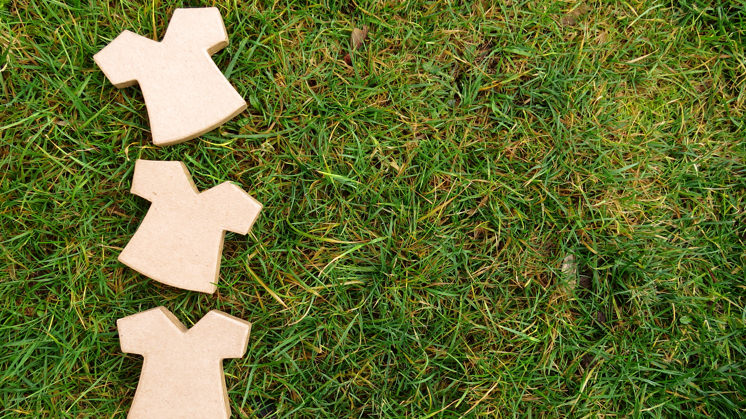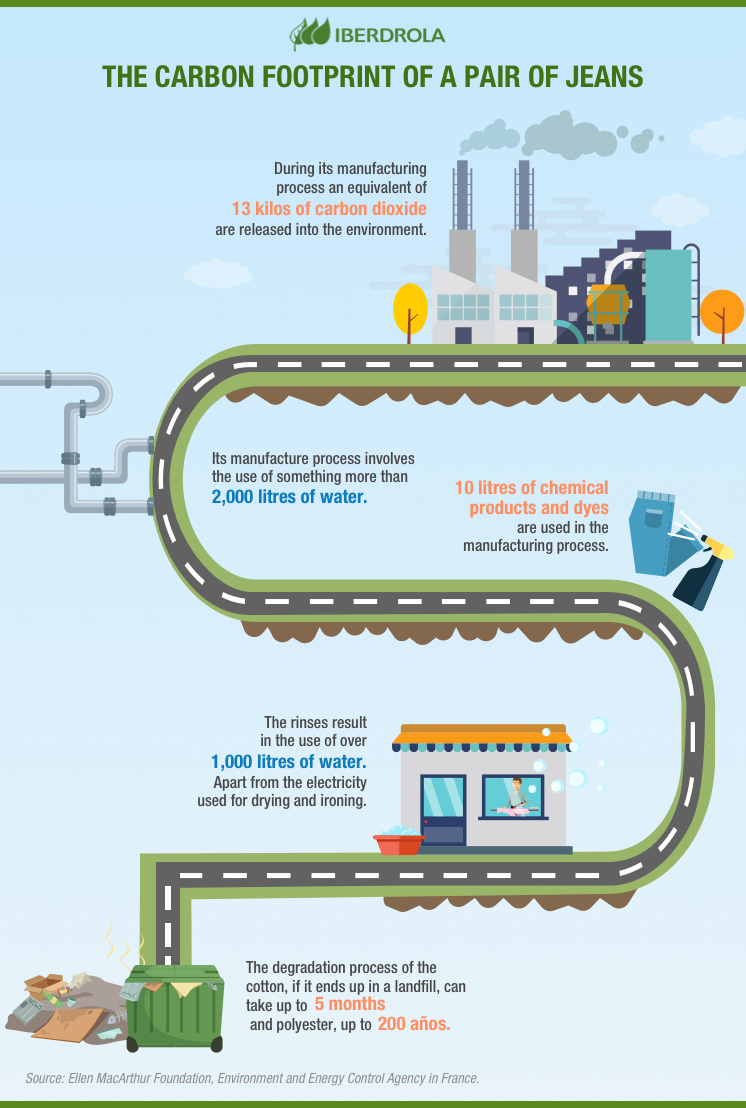What is biodegradable clothing?
Biodegradable clothing: a way to reduce the polluting effects of fashion
The fashion industry, which is responsible for 8% of global CO2 emissions into the atmosphere, is the second most polluting after the oil industry. How can its impact on the environment be reduced? Biodegradable clothing is one of the answers and one of the industry's main commitments to promoting sustainability. Would you like to go shopping?

Most consumers are unaware that the jeans or trainers we wear involve a manufacturing process that uses many chemical products that are harmful to the environment. If you add to this the phenomenon of fast fashion — or disposable clothing —, which results in clothes only gracing consumers' wardrobes for a short time, the problem is aggravated because in most cases they end up in landfills and take months, even years, to disappear.
The environmental impact of fast fashion
Clothes are becoming a disposable product. Why? At present, chain stores change their product ranges every few weeks generating a constant production cycle that causes significant damage to nature due, among other things, to the constant use of pesticides and polluting dyes, the excessive use of water and electricity, and the emission of polluting fumes into the atmosphere during transportation. Fast fashion is mainly manufactured in Asia and then distributed to the rest of the world.
What are the consequences? In environmental terms, the textile industry is responsible for 8% of global CO2 emissions, it causes at least 20% of water pollution and indirectly causes the accumulation of huge quantities of clothing in landfills, a type of waste that is difficult to manage. A fact that illustrates this is: in the European Union (EU) barely 25% of the more than 16 million tonnes of textile waste generated each year is recycled.
This is probably why in 2018 the United Nations (UN) described the pollution from the fast fashion industry as an "environmental emergency". "It is clear that the fashion industry needs to change gear and become environmentally responsible," said Olga Algayerova, Executive Secretary of the United Nations Economic Commission for Europe at an event dedicated to the sector. What are the solutions? Biodegradable clothing is becoming an option.

SEE INFOGRAPHIC: The carbon footprint of a pair of jeans [PDF] External link, opens in new window.
What is biodegradable clothing?
As in so many other areas, the prefix bio has also entered the field of fashion, but what exactly do we mean when we speak of biodegradable clothing? Biodegradable material is material that can decompose in nature to natural chemical elements as a result of the action of biological agents such as plants, bacteria or animals, along with other physical agents such as the sun or water that transform these substances into compounds that serve as nutrients for the environment.
Applied to clothing, bio garments — shoes, t-shirts or trousers, and also sheets or tablecloths — are those that have been manufactured with the aim of having the least impact possible on the environment during their entire life cycle. This translates into the use of materials that are nature friendly and degrade easily. The good news is there are more and more initiatives of this type. We can find, for example, everything from trainers made from materials such as organic cotton, hemp, linen, coconut or vegetable skin to trainers made from recycled materials such as plastic bottles collected from the bottom of the sea or nylon recovered from fishing nets.
Biodegradable clothing initiatives and certifications
In 2012, Greenpeace produced a list of the eleven most dangerous and polluting toxic chemicals used in the production of clothing: alkylphenols, phthalates, brominated and chlorinated flame retardants, azoic dyes, organotin compounds, perfluorinated chemicals, chlorobenzenes, chlorinated solvents, chlorophenols and short chain chlorinated paraffins (SCCP). As a result, the NGO launched a Detox Campaign and got 80 fashion companies to commit to eliminating these substances from their production chain by 2020.
The ZDHC program (Zero Discharge of Hazardous Chemicals) is a coalition of fashion brands and associations related to this industry whose main objective is to eliminate these hazardous chemicals along the entire value chain for textile, leather and footwear fashion garments.
Ecological certificates are another measure aimed at promoting sustainable fashion, offering an organic quality stamp that ensures that the company that holds it is committed to preserving and caring for the environment. Let's take a look at some of them:
Global Organic Textile Standard (GOTS)
It certifies that a minimum of 70% organic fibres have been used in the garment. In addition, it analyses dyes and other chemical products and does not accept fibres from genetically modified plants. It is the most widespread certification.
Naturtextil IVN Certified
This European certification organisation is very strict and guarantees that the garments are 100% natural.
Other standards include
Oeko-Tex, OE (Organic Exchange), CCS (Content Claim Standard), OCS (Organic Content Standard), IMO (Institute of Marketecology).
Although biodegradable clothing is far more environment friendly, zero impact does not exist. This is why we also need to appeal to the conscience of the consumers who have in their hands simple ways to minimise the negative impact of the fashion industry: extending the life of the garments, handing them over to organisations responsible for giving them a second life or placing them in containers specially designed for them.
Circular economy model at the Iberdrola Group
At Iberdrola, we work to be more respectful of nature in our three strategic sustainability areas: climate action, biodiversity protection, and circular economy.
For this reason, our sustainable business model is based on the circular economy model, a system for making the most of resources in which priority is given to reducing the use of new raw materials through efficiency in processes, product life extensions, and a firm commitment to the reuse and recycling of materials.




